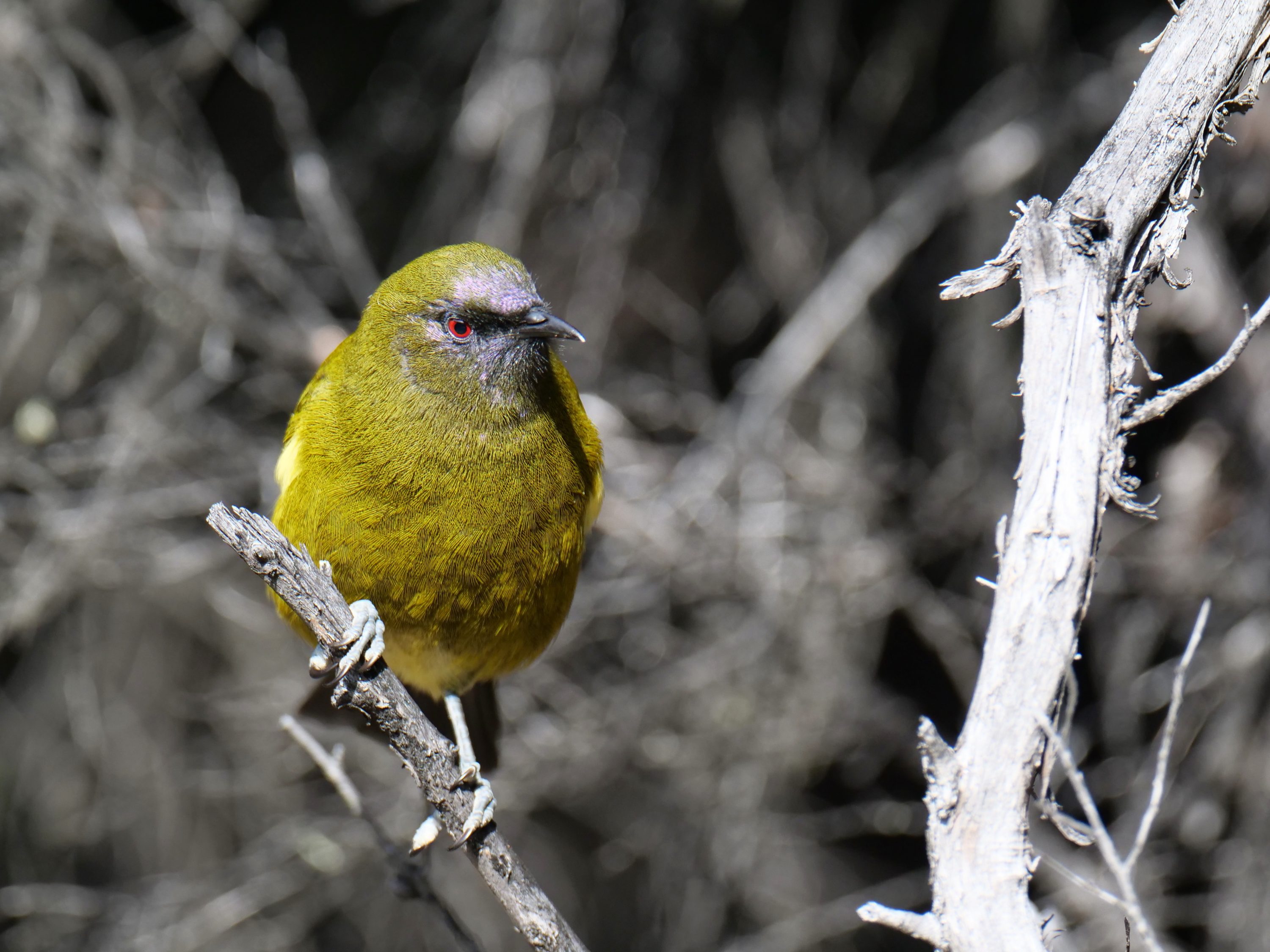The featured image shows a New Zealand bellbird, Anthornis melanura.
(photos copyright Doug Spencer, all taken on Mou Waho, 21 March 2019)
However, this post’s star is a less “glamorous” but altogether more curious bird – in both senses of “curious”.
Once common/widespread in New Zealand, the buff weka is now almost entirely absent…but re-established and thriving on Mou Waho.
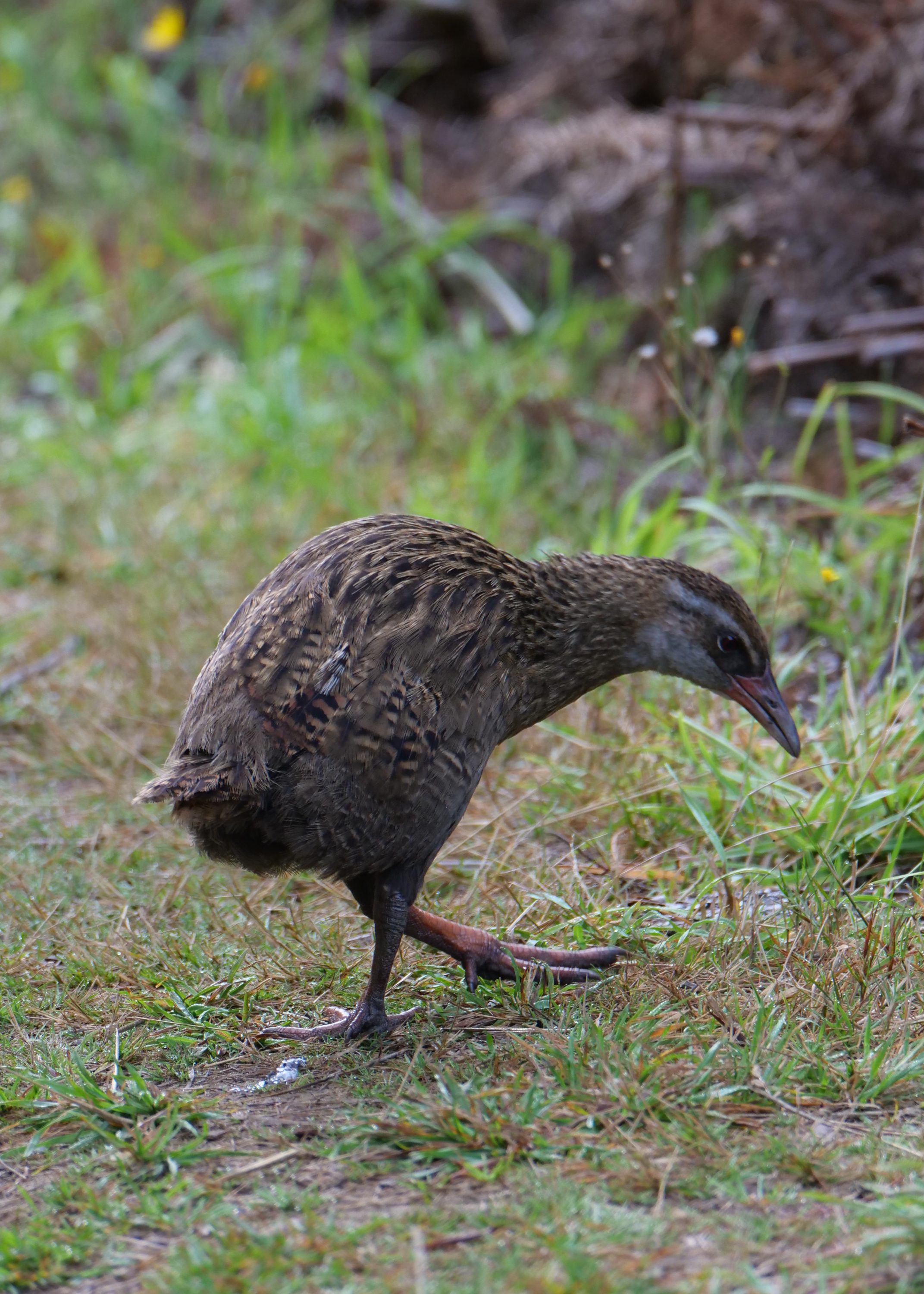
Gallirallus australis – the weka – is a very large rail, flightless, omnivorous, very inquisitive, and acquisitive; their “thieving” of shiny or colourful objects is nigh-proverbial in New Zealand.
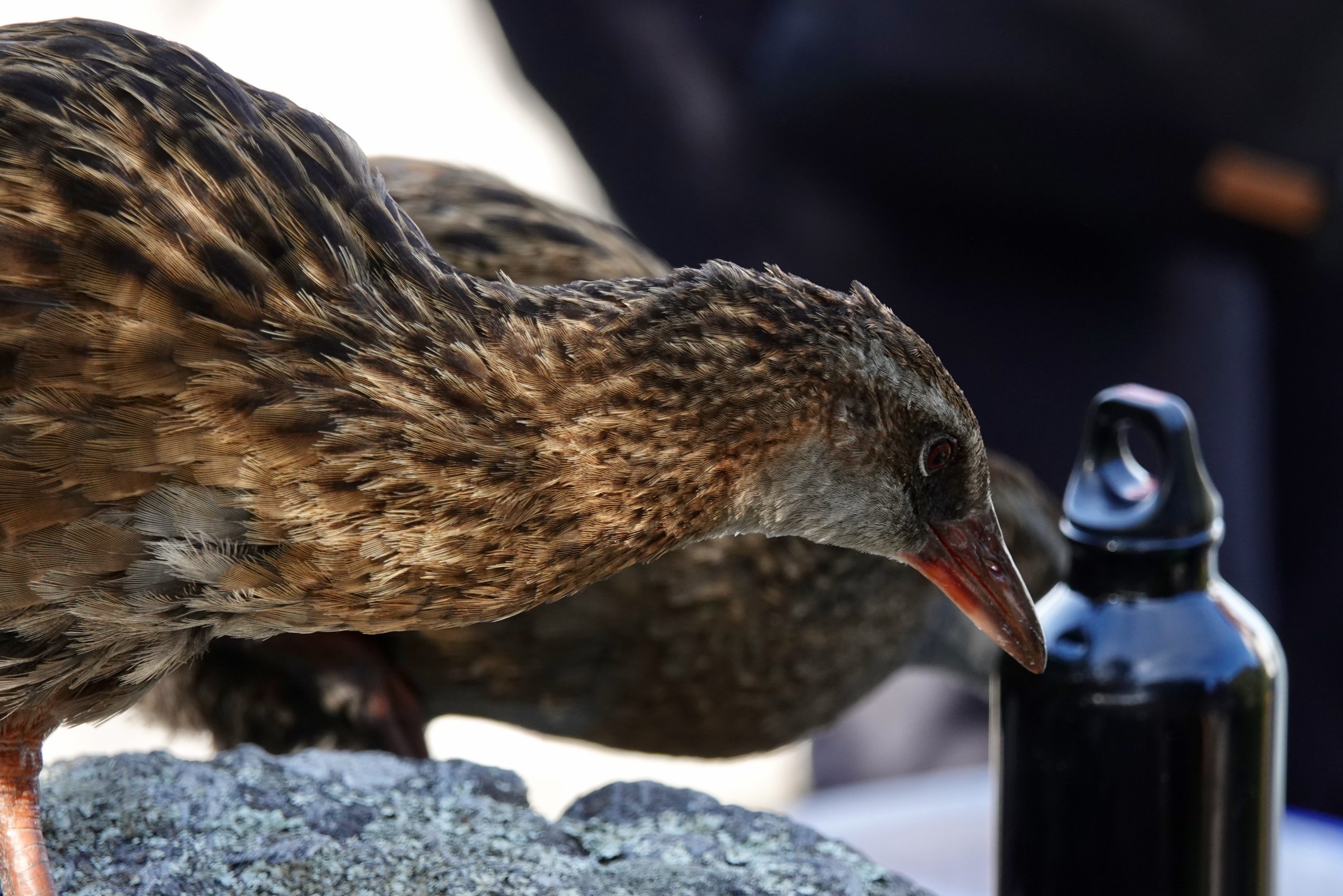
The rarest of its four subspecies – the buff weka, Gallirallus australis hectori – would now be extinct, but for the timely 1960s translocation of a small number (happily, a genetically diverse selection) to the Chatham Islands, 800 kilometres east of the buff weka’s homelands on NZ South Island.
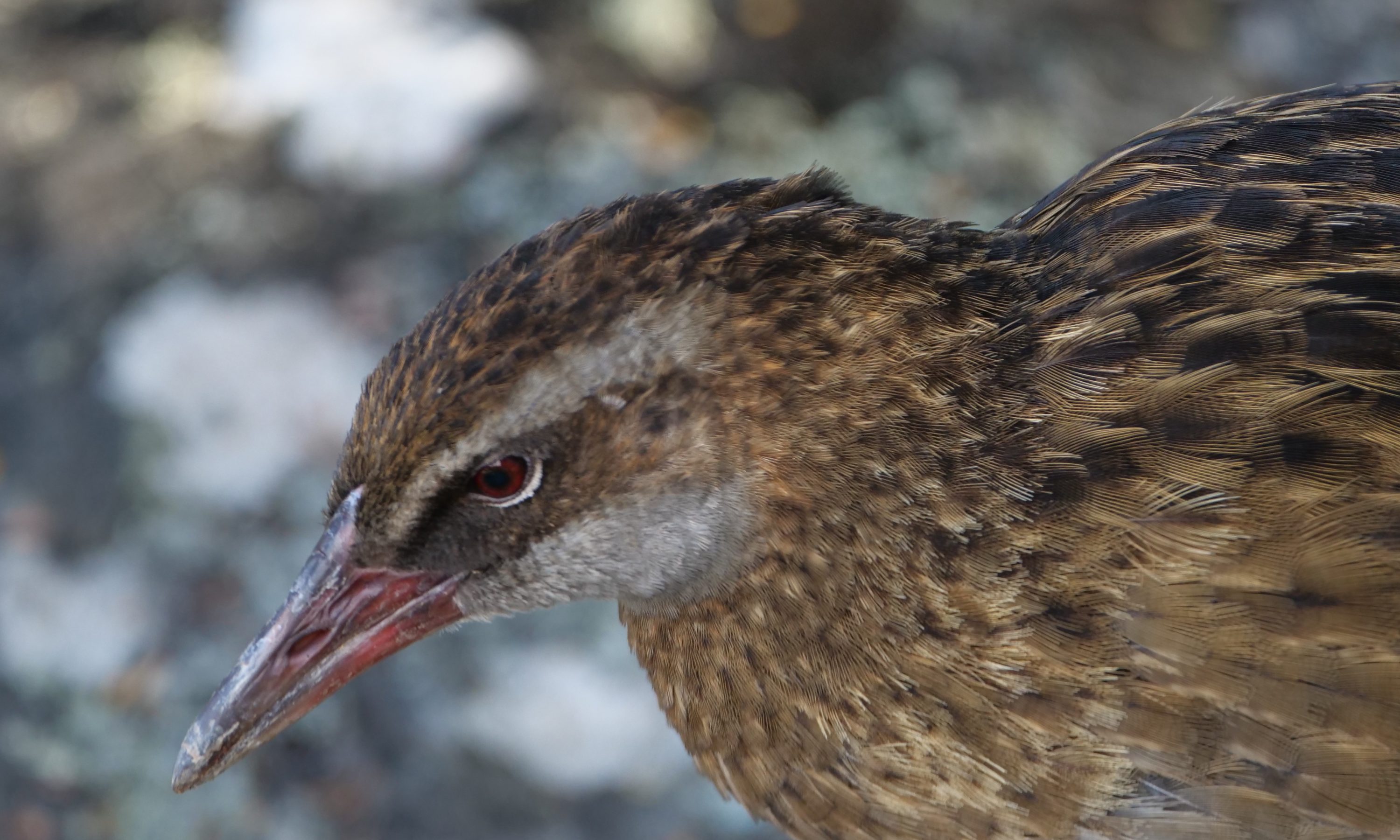
As with so many other endemic NZ species, their undoing was thanks to the late 19th century introduction to NZ of Mustela erminea, the stoat.
Stoats were brought in to “control” an earlier-introduced “pest” – the rabbit.
Millions of rabbits still roam NZ.
However, the stoats proved devastating to NZ’s birds; until the Maori brought rodents, then the Europeans added stoats, those birds had not had any mammalian predators.
As it happens, NZ’s first stoats were unleashed around Wanaka.
Since the buff weka’s breeding success on the Chatham Islands there have been many attempts to reintroduce them to NZ, generally onto islands (in lakes) that had been “cleared” of predators.
Almost all attempts have failed. Mou Waho is the happiest exception.
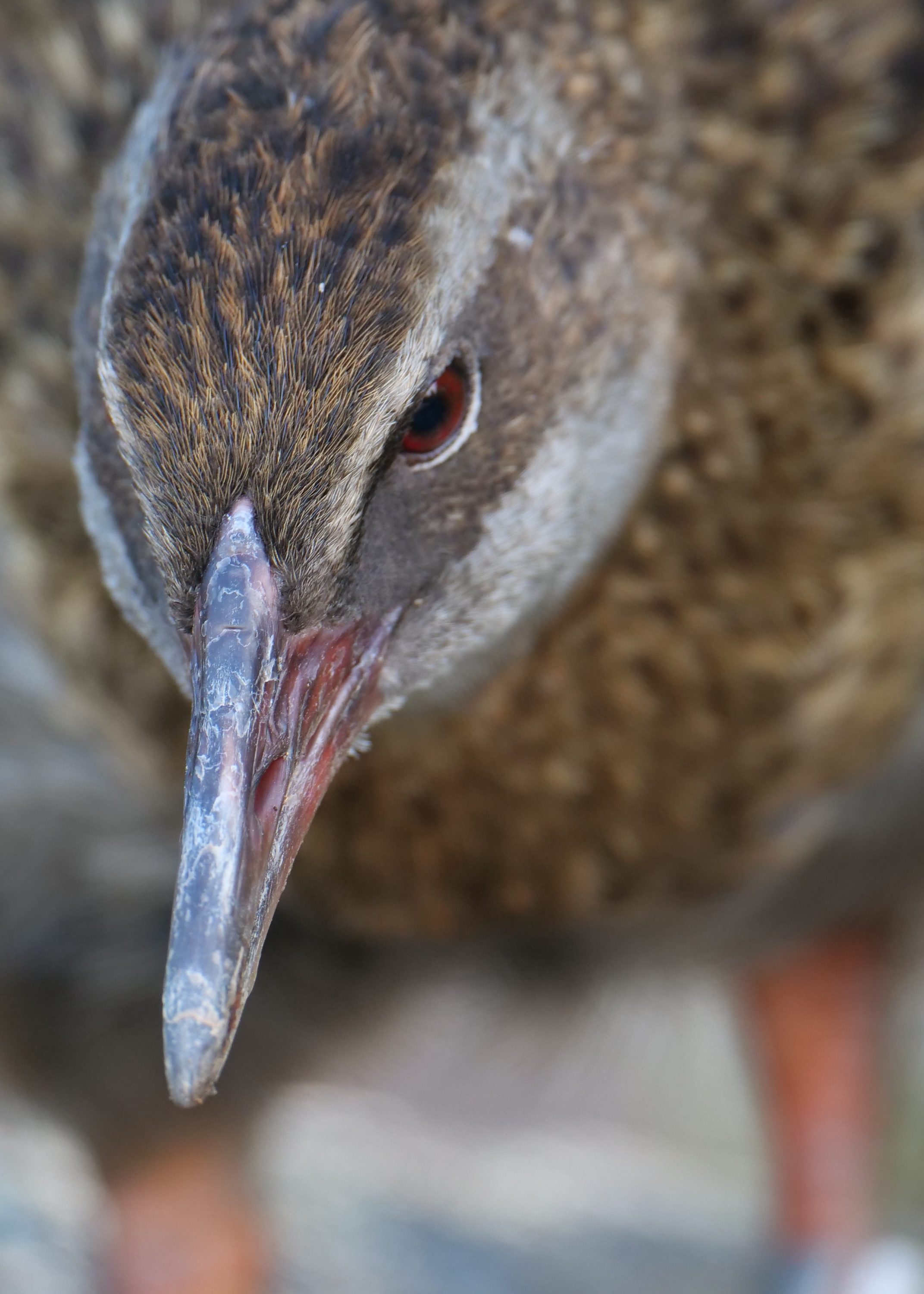
Alas, stoats can swim from lakes’ shores to their nearby islands!
Mou Waho has been rodent-free for more than 20 years, its vegetation is progressively being restored to a “natural” state, and – it seems – this island just may be “too far enough, stoatwise” from Lake Wanaka’s stoat-infested perimeter.
This post’s featured individuals became an oft-coupling couple soon after their 2004 arrival on Mou Waho.
Known as Wally and Sally, they have made – and still are making – what could prove a great contribution to their subspecies having a future in the wekas’ homeland.
You can read their story, here.
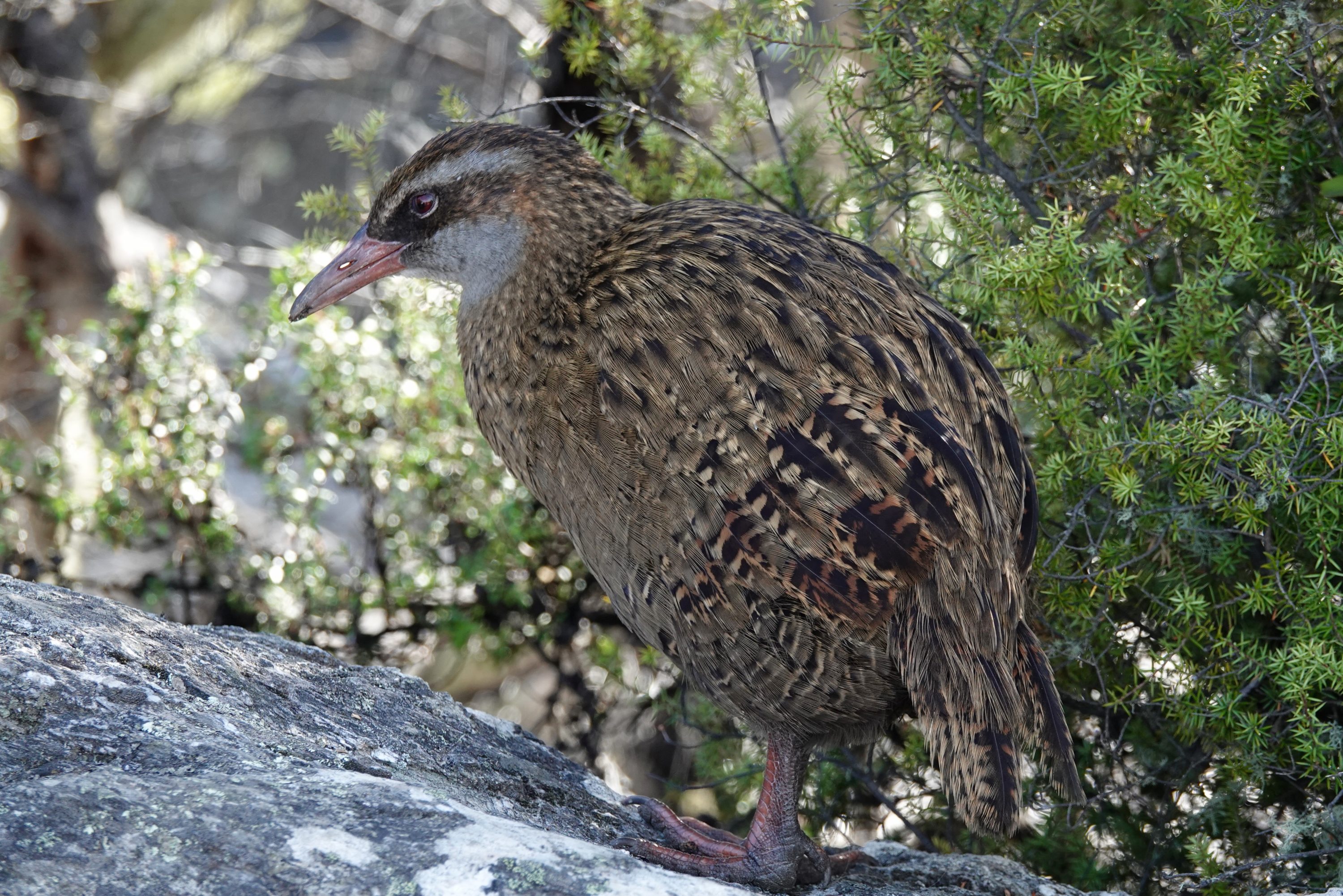
This Mou Waho trilogy’s final chapter will involve an amazing insect, a lovely lizard, and an interesting example of plant adaptation.
